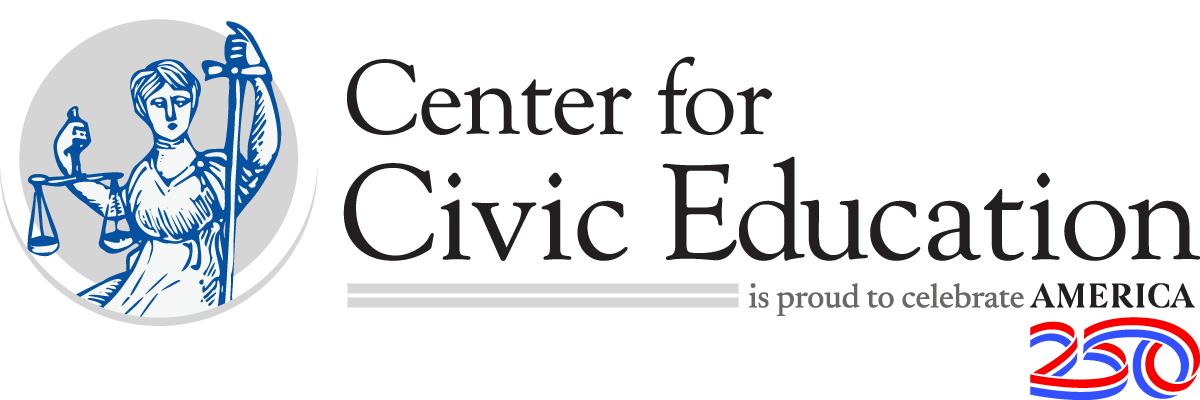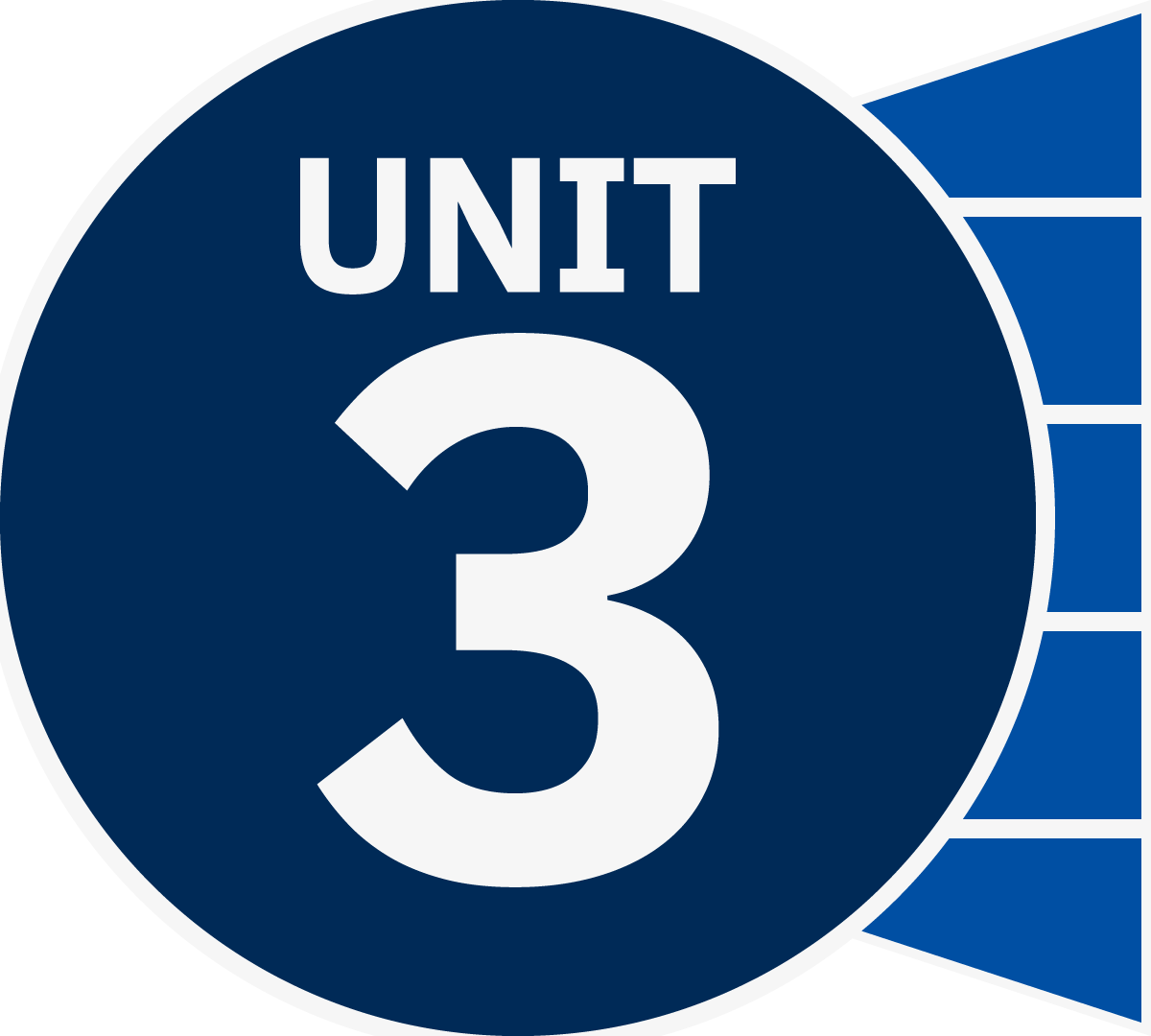Inquiry Companion: Unit 3
In Unit 3 of the We the People: The Citizen & the Constitution textbook, students discover the ways in which our Constitution is a living document that continues to evolve by examining the power of judicial review, the evolution of voting rights, and the impact of the Equal Protection Clause over the course of history.
How is the Inquiry Companion Structured?
Unit 3 challenges students to investigate the successes and failures of our democratic experiment. Our Inquiry Companion Guide activities for Unit 3 facilitate student participation in inquiry-based civics learning for each strategy.
Students engage by discussing a 1965 literacy test, and they explore the formation and function of political parties. They will explain the evolution of the Equal Protection Clause by participating in a civic conversation. Students then elaborate on voting rights and voter suppression through a democratic experience simulation. Finally, students will evaluate their understanding of the controversy surrounding judicial review.
Best practices for culturally responsive teaching weave through each activity.
Inquiry Guide Activity
Students demonstrate and evaluate new civic learning through real-world informed engagement opportunities.
The activity explores the controversy surrounding judicial review, with a focus on concerns about the judiciary’s power and its impact on the balance of power. The instructional strategy involves students engaging in an opinion roundtable discussion to assess whether judicial review grants the U.S. Supreme Court excessive power.
Utilize this Evaluate strategy activity in order to enhance students’ understanding of the We the People: The Citizen & the Constitution textbook for Level 3, Unit 3, Lesson 15 or Level 2, Unit 4, Lesson 21.
We the People: The Citizen & the Constitution (Level 3)
- Unit 3, Lesson 15: How Have Amendments and Judicial Review Changed the Constitution?
- Unit 4, Lesson 21: How Does the U.S. Supreme Court Use the Power of Judicial Review?
- Attentiveness to political matters
- Listening
- Reading
- Self-awareness
- Self-management
- Speaking
- Evaluate how judicial review has impacted the power of the U.S. Supreme Court
- Apply knowledge about the impact of judicial review by participating in an opinion roundtable discussion
- Does judicial review give the U.S. Supreme Court too much power?
- judicial branch The branch of government responsible for interpreting the law.
- judicial review The power of the court to evaluate the constitutionality of laws and governmental actions.
- Marbury v. Madison Landmark U.S. Supreme Court case that established the principle of judicial review, granting the court the authority to declare acts of Congress unconstitutional.
- U.S. Supreme Court The highest judicial body in the U.S., responsible for the final decisions on legal matters dealing with the interpretation of the U.S. Constitution.
Judicial review refers to the power of the judiciary, particularly the courts, to decide whether laws and government actions are constitutional. Judicial review is a crucial concept in the field of law, often seen as a cornerstone of checks and balances within a government. This process allows the judicial branch to ensure that the actions of the executive and legislative branches comply with the Constitution, preventing any overreach of power.
In the United States, the power of judicial review was established by the landmark case of Marbury v. Madison in 1803. Chief Justice John Marshall argued that the Supreme Court had the authority to review acts of Congress and determine their constitutionality. This decision solidified the principle that the judiciary plays a crucial role in interpreting the Constitution and serves as a check on the powers of the other branches.
Judicial review is controversial because it was established by a Supreme Court case and not explicitly stated in the Constitution. Many of the Framers, including Alexander Hamilton, believed the judiciary would be the “least dangerous” branch because it lacked the power of the purse and the power of the sword, referring to the legislative and executive branches’ control over finances and the military. However, over time, some argue that the power of judicial review has made the judiciary too powerful and allows the courts to sidestep the bill process by effectively making policy when deeming governmental actions unconstitutional. Many have turned to the court to enact change when they were unsuccessful in Congress. This power has increasingly come under scrutiny in recent years due to the lifetime term of Supreme Court justices and the lack of ethical guidelines involving politics.
Additional resources for teacher background include the following:
Teachers should preview all student materials and resources prior to the lesson.
- Welcome students to social studies.
- Introduce the inquiry question: “Does judicial review give the U.S. Supreme Court too much power?”
- Allow students time to make a prediction about the inquiry question as well as offer their own supporting questions.
- To provide a quick review, play The Least Dangerous Branch. As students watch, tell them to listen for a definition or examples of judicial review.
- Play the video a second time to support comprehension as needed.
- Collect student responses about judicial review on an anchor chart.
- Using your routine strategy for setting up groups, divide the class into groups of approximately four to five student members. This activity can be done with fewer or more students in a group if desired, however, four or five is the optimal number to ensure that there is a variety of viewpoints as well as time for everyone to share their thoughts.
- Tell students that they will now participate in an opinion roundtable where they will have the opportunity to share their views on judicial review.
- Distribute copies of the Judicial Review Opinion Roundtable Instructions and What Is Your Opinion? Tracking Sheet, which will facilitate conversation activity.
- Preview the Opinion Roundtable Instructions and Tracking Sheet together to ensure students understand the purpose and expectations.
- Each group will conduct its own opinion roundtable by discussing the following statements:
- Judicial review is necessary to check the power of the legislative and executive branches.
- Judicial review has increased the power of the U.S. Supreme Court over time.
- Chief Justice John Marshall would agree with the current-day use of judicial review.
- The expansion of individual rights would have happened even if the U.S. Supreme Court did not have the power of judicial review.
- The U.S. Supreme Court system should change to decrease its power of judicial review.
- Students may refer to the anchor chart to help form their opinions if needed.
- Circulate around the room, encouraging each group, observing progress, and redirecting as needed.
- Facilitate a brief opinion roundtable debrief by asking the following questions:
- How did your opinion before the discussion compare to after the discussion? Why was this the case?
- Did any of your classmates bring up a point that changed your view or made you think of a topic in a different way? If so, describe that process. If not, what did you learn about your opinion by listening to other points of view?
- Based on your discussion and prior knowledge, do you think an unelected body should hold the power of judicial review?
- Do you agree or disagree with Alexander Hamilton that the judiciary is the least dangerous branch? Why or why not?
- Students will complete a post-discussion reflection.
Students will demonstrate their mastery of judicial review by creating a point/counterpoint TikTok-style video to answer the inquiry question: “Does judicial review give the U.S. Supreme Court too much power?” Videos could be shared with another class for peer review.
Students create a Top 10 list ranking the most important U.S. Supreme Court cases employing judicial review. Students then present and defend their ranking to their classmates.













